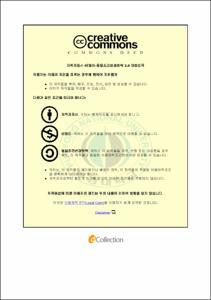유생성에 따른 영어 타동사 구문의 한국어 번역 유형
- Abstract
- Animacy and Korean Translations of English Transitives
Ae, Shin
Graduate School of English
Pukyong National University
Abstract
The purpose of this study is to discuss how English transitives translate into Korean and how English-Korean translations are affected by the idea of animacy. 145 English transitives (including 124 animate subject sentences and 21 inanimate subject sentences) were selected from Reader’s Digest (English-Korean Version) Vol. 101. The analysis shows that the English-Korean translation of the animate subject sentences (22.6%) have fewer changes than that of the inanimate subject sentences (52.4%). The Korean translations are changed according to the animacy of the subjects and the objects. The following is the result of the analysis.
Most of the animate subjects are kept as subject in their Korean translations. When the animate objects are used, two thirds of them are translated taking Korean personal suffix ‘-ege’. In the case of inanimate objects, double subject structures in which the original subjects still keep their positions and the objects are promoted to a subject position are remarkable.
When inanimate subjects remain as subject in Korean, the inanimate subjects are such as organization, country, city, machine or less typical agents (e.g tumor). In the case of animate objects in inanimate subject sentences, 83.3% of the animate objects are promoted to a subject position and the inanimate subjects are translated into Korean mainly as an instrument, a place or an adverbial adding the proper Korean suffixes.
With either inanimate subject or inanimate object, the element which implies a human participant can be translated as the subject in Korean. When the transitive clauses are less prototypical or Korean translations are affected by English which allows inanimate subjects, inanimate subjects tend to be translated in their original positions in Korean, too.
- Issued Date
- 2011
- Awarded Date
- 2011. 2
- Type
- Dissertation
- Publisher
- 부경대학교
- Affiliation
- 부경대학교 영어영문학과
- Department
- 대학원 영어영문학과
- Advisor
- 김은일 교수님
- Table Of Contents
- 목 차
영 문 초 록 ................................................................................................... ⅱ
Ⅰ. 서론 ............................................................................................................. 1
Ⅱ. 이론적 배경 ............................................................................................. 4
2.1. 유생성 .................................................................................................... 4
2.2. 타동성 .................................................................................................... 6
Ⅲ. 유생성에 따른 영한 번역 유형 ........................................................ 9
3.1. 타동사 구문의 번역 ............................................................................ 9
3.2. 생물주어 구문 .................................................................................... 10
3.2.1. 생물목적어 ..................................................................................... 10
3.2.2. 무생물목적어 ................................................................................ 15
3.3. 무생물주어 구문 .............................................................................. 23
3.3.1. 생물목적어 ................................................................................. 23
3.3.2. 무생물목적어 ................................................................................ 28
Ⅳ. 결론 .......................................................................................................... 38
참 고 문 헌 ................................................................................................... 40
- Degree
- Master
- Files in This Item:
-
-
Download
 유생성에 따른 영어 타동사 구문의 한국어 번역 유형.pdf
기타 데이터 / 609.53 kB / Adobe PDF
유생성에 따른 영어 타동사 구문의 한국어 번역 유형.pdf
기타 데이터 / 609.53 kB / Adobe PDF
-
Items in Repository are protected by copyright, with all rights reserved, unless otherwise indicated.